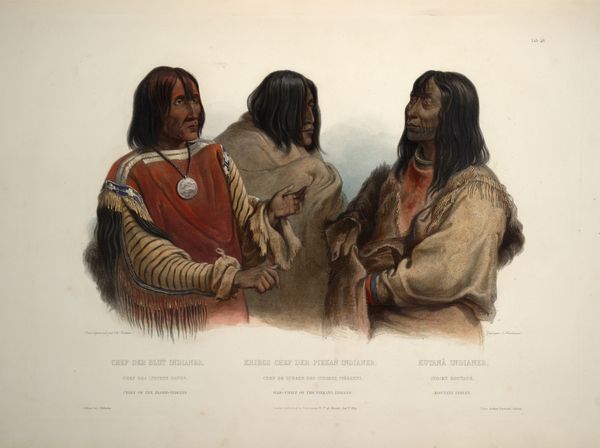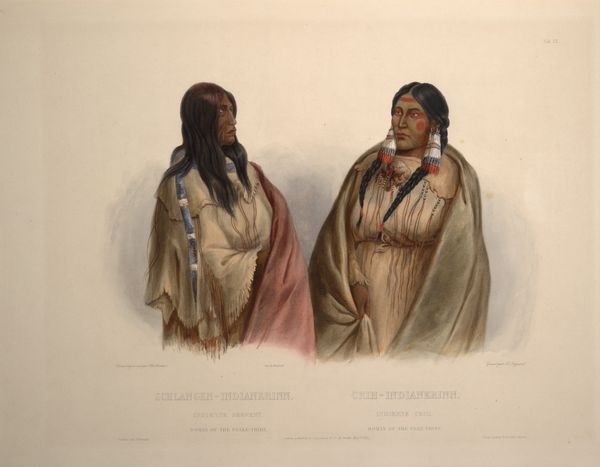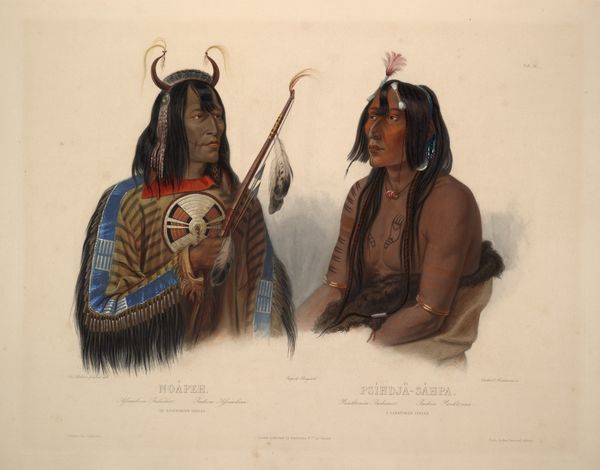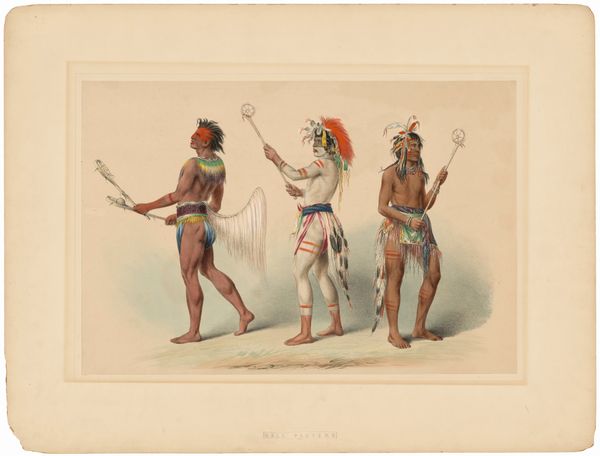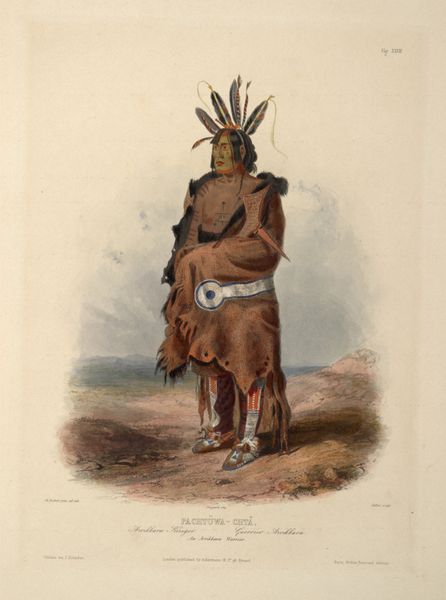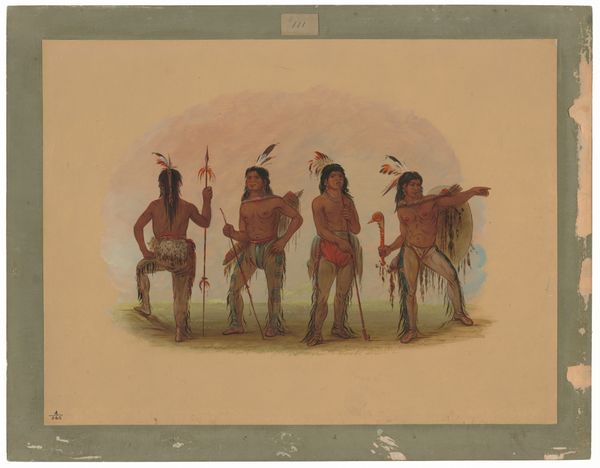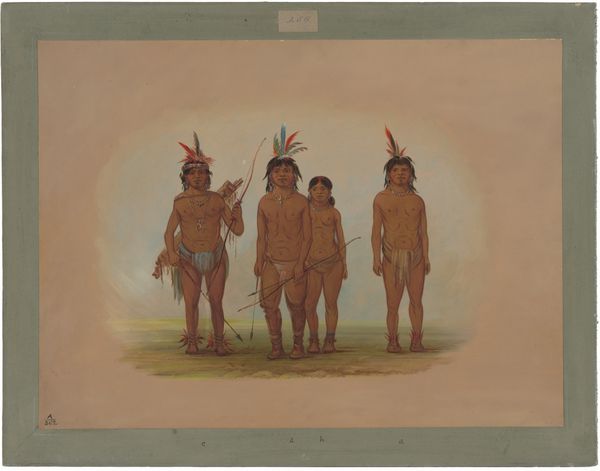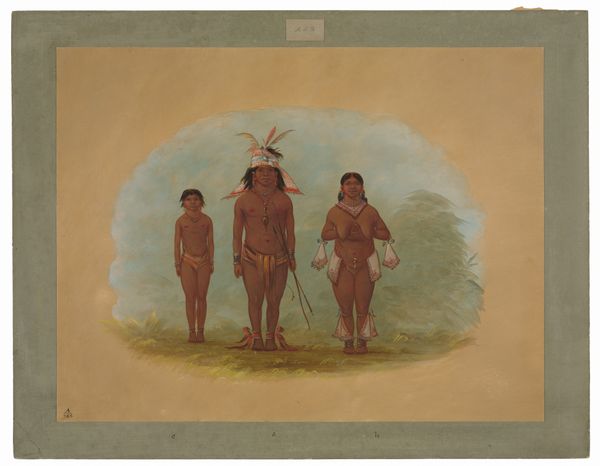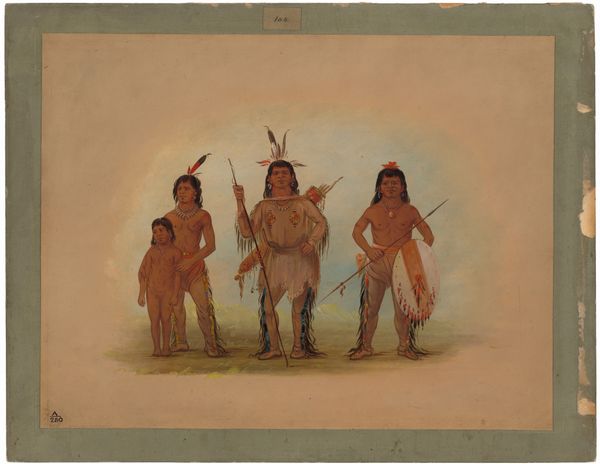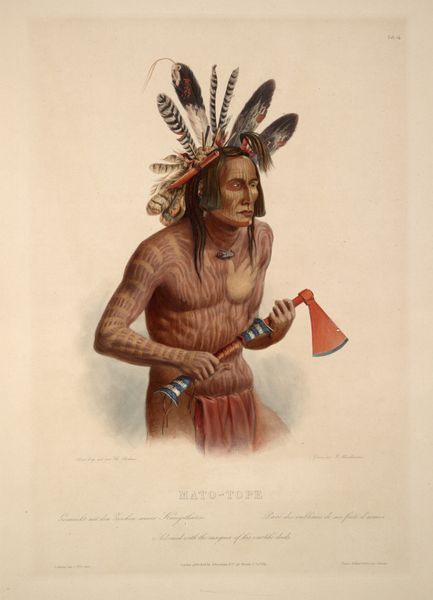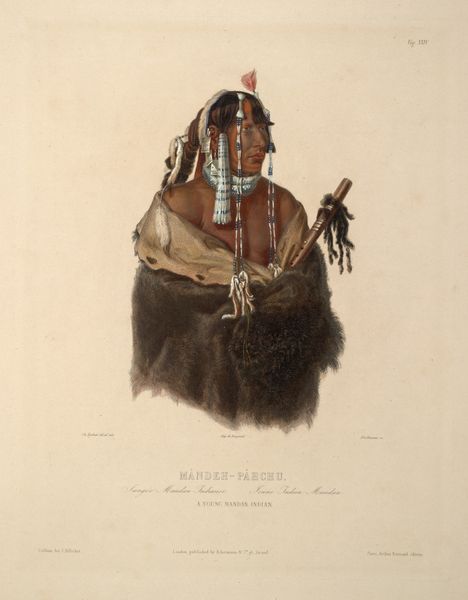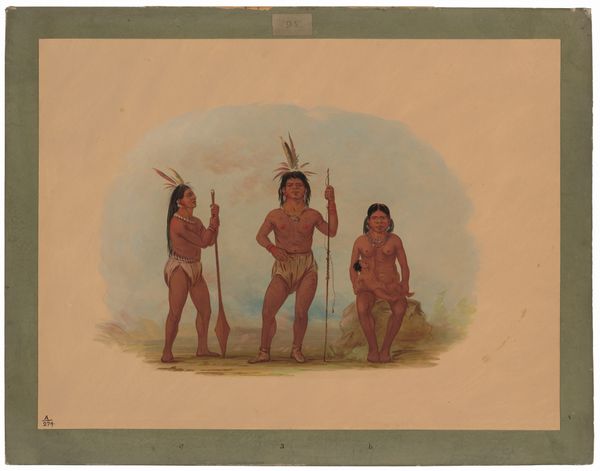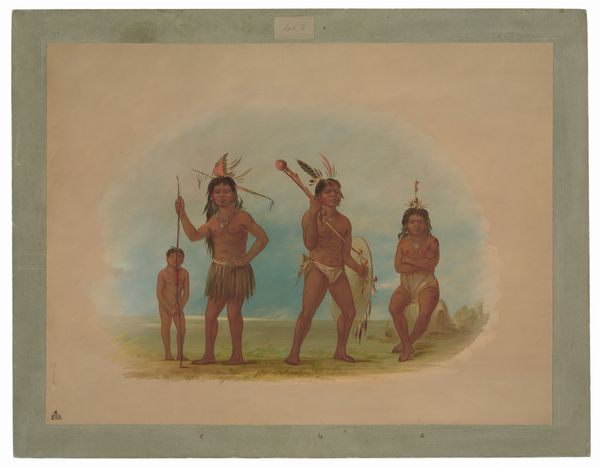
A Missouri Indian, an Oto Indian and the Chief of the Puncas, plate 7 from 'Travels in the Interior of North America' 1844
0:00
0:00
karlbodmer
Private Collection
lithograph, print, paper
#
portrait
#
lithograph
# print
#
paper
#
watercolor
#
indigenous-americas
Copyright: Public domain
Curator: What strikes me immediately about this image is the stark, almost classical composition. It feels very deliberate, with each figure carefully rendered in the Romantic style. Editor: Indeed. What we're looking at is plate 7 from Karl Bodmer's "Travels in the Interior of North America," published in 1844. The artwork presents a group portrait of a Missouri Indian, an Oto Indian, and the Chief of the Puncas tribe. It’s an intimate portrayal. Curator: Intimate, yet posed. You can feel the artist striving for an idealised representation of each individual. The soft watercolour textures create a compelling surface, drawing my eye to the necklaces and facial details. It is all in service of conveying an important ideal of beauty of this time. Editor: Absolutely, but the material context is critical. Bodmer’s images served as visual documents for European audiences, shaping perceptions of Indigenous peoples and lands, contributing to colonial narratives and policies. The details in their clothing, hairstyles, and ornaments offer a glimpse into material culture and social status within their respective tribes. How was this piece used for shaping narratives? Curator: From a formalist point of view, the contrast in the tonal palette between each figure’s skin and the light fabrics that are draped around them, and how light delicately hits certain features is visually pleasing. It really is meant to elevate their features and even celebrate an existing beauty and bring to it more, even in the way that ancient roman portraiture often added to the sitter’s appearance. Editor: These images romanticize the “noble savage” ideal while simultaneously facilitating the erasure of Indigenous cultures through settlement and resource extraction. This artwork acts as both documentation and monument in an exploitive colonial framework. Curator: It’s fascinating how these two aspects can coexist within a single piece, reflecting how artwork acts as a marker of power, social expectations, artistic merit and also visual pleasure. Thank you for providing your perspective on this intriguing painting. Editor: Thank you! These dual readings invite us to confront historical complexities, and I hope this conversation will deepen listeners' appreciation for art.
Comments
No comments
Be the first to comment and join the conversation on the ultimate creative platform.
